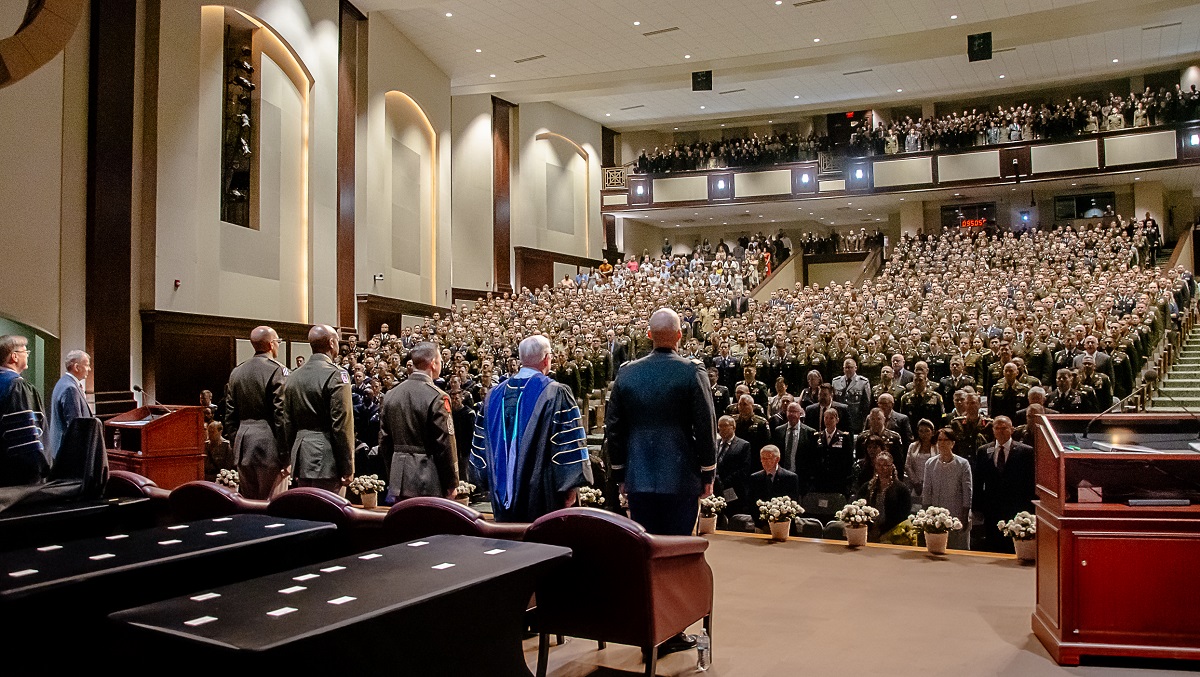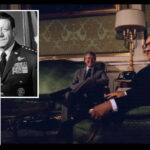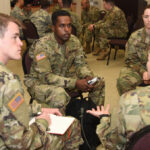
EDITOR’S NOTE: This is the third installment in a multi-part series that examines how professional military education should be designed. This and subsequent articles will look through the lens of the competencies required of officers as the global security environment changes once again. The collection of articles can be found in a collection here once they have been published.
“Military success relies on a joint and multinational effort, usually with components and other force elements brought together under a unified command structure. Successful joint operations require an inclusive approach to maximize the overall effect of the JTF. This will ensure making the best use of the complete range of capabilities.” -NATO Standard Allied Joint Doctrine for the Conduct of Operations (AJP-3), February, 2019
The joint-service approach to intermediate PME is surely the most common among western nations, a recognition that in the current security environment the military instrument rarely operates unless as part of not only a comprehensive “whole of government” strategy, but also as part of an integrated all-arms and joint services enterprise. Additionally, in practice the joint service PME approach explicitly recognizes that beyond functioning as a joint enterprise, western nations will rarely employ the military instrument except as part of a combined or multinational force. Joint and combined military operations are not a unique feature of the 21st century—these kinds of operations are as old as our recorded knowledge of military operations extends, with Thucydides describing several campaigns in the Peloponnesian Wars that are recognizably joint and even combined in nature. However, it has only been since the end of the Second World War that within the military profession a recognition of the importance of joint education and training has taken firm root, and it has only been since the 1980’s and 1990’s that this form of intermediate PME has become the prevalent norm.
The U.S. Department of Defense defines the concept of “joint” operations as “military actions conducted by joint forces and those Service forces employed in specified command relationships with each other, which of themselves do not establish joint forces. A joint force is one composed of significant elements, assigned or attached, of two or more [military departments] operating under a single [Joint Force Commander].” As such, joint operations require intermediate PME graduates acting as staff officers and commanders who are not only tactical experts in their own, primary specialty or warfighting domain—air, land, sea, space, cyber, information—but who understand how to plan, synchronize and integrate military operations across domains using the capabilities of all of the joint and multinational forces available. As stated in the course description of the United Kingdom’s advanced intermediate PME course, “The Advanced Command and Staff Course (ACSC) prepares mid-ranking military officers and civil servants for senior positions by broadening their professional knowledge on a wide spectrum of military, political and international issues…applying the military instrument in the Information Age as part of an integrated force.” [emphasis added by the author].
This short article seeks to assess the value of this most common form of intermediate PME program, and outline some of the most relevant competencies militaries should be seeking to develop in their graduates of a joint-service PME program. Finally, this article finds that the current joint-service PME approach is, although perhaps in need of some further evolution given rapidly advancing concepts around multi-domain operations and new technological challenges for the profession of arms, still widely suited for most militaries as a proven and useful construct.
Key Competencies for a Joint Service Approach
Joint-service intermediate PME is designed to prepare mid-career officers for service as staff officers and field-grade commanders in operational-level formations, joint, or multinational task forces. Accordingly, in order for any joint-service intermediate PME program to be successful, it must be required that students and faculty are carefully selected to ensure that a complete mix of different service, agency and multinational perspectives are present in the program, that diverse academic disciplines bearing on the subject matter can be applied, and that sufficient rigor is present such that officers are challenged and assessed to provide the best outcomes for the program and the military organizations it serves. As stated above, it is also critical that prior to attendance students have demonstrated mastery at the tactical level of their particular specialty—it is only with this mastery that students can look “up and out” to begin to understand the complexities of joint and multinational warfare at the operational level, which should be the centerpiece of this kind of PME program.
The instruction outlining the United States’ Officer Professional Military Education Program, or OPMEP is a decent starting point for laying out the key competencies a joint service PME program should produce in graduates. This document governs all requirements for joint PME in the U.S. military from officer pre-commissioning to general- and flag-officer education. It states that the curriculum of all intermediate PME programs awarding joint education credit must focus on warfighting at the operational level of war and provide a comprehensive introduction to national strategic guidance documents, along with theater strategies and plans and the ways in which these policies and documents are developed and integrated. The foundation of joint service and multinational planning and action is these kinds of documents: execution of the joint functions at the operational level is what links national military strategy and tactical actions across the battlespace.
For NATO member states especially, officer facility in these areas is of critical importance given the complexities of unified alliance and multinational operations.
One of the key centerpieces of the OPMEP requirements for joint intermediate PME is the process of joint planning. Every military has its own process for planning, and each service within a broader military may also have its own specific planning methods. Including joint planning as a required competency demands an understanding not only of joint doctrine, but also of the joint capabilities of the various services within a military and perhaps more critically, the structures, requirements and authorities for joint and multinational command and control. Competence in joint operational planning brings with it an understanding of the joint functions, how they are integrated to achieve strategic outcomes, and how operational art is related to the principles of command and leadership. Finally, joint planning competence reinforces knowledge of the myriad ways in which logistics, sustainment, operational contracting, and force generation must work in theater campaigning. For NATO member states especially, officer facility in these areas is of critical importance given the complexities of unified alliance and multinational operations.
Joint-service PME programs can add to the instruction discussed above the dimensions of defense industry integration and joint requirements, technological innovation and adaptation, and more traditional subjects as civil-military relations and the legal and moral components of war. The UK Advanced Command and Staff Course has dedicated instruction on the defense industry and even brings in adjunct instructors and students from defense corporations. Curriculum diversified in this way can improve a program by broadening students’ conceptual horizons, by providing other perspectives on the layers of a society’s involvement in the business, art and science of warfare.
The potential weakness of a traditional joint-services PME program is that it might fail to have students adequately practice and demonstrate competency in the foundations of joint operations, for example by not including exercises and wargaming as integral components of the course. By not having adequately qualified faculty, a program is in danger of merely superficial instruction in joint capabilities, synchronization and integration across domains, or leaving out key aspects of multinational or combined planning and operations or joint logistics and force development. Finally, any joint-service PME program which does not keep pace with rapid developments in technology and force modernization, and the resultant required adaptation of doctrine and practice, will soon become irrelevant.
Why Choose a Joint-Service Approach?
Contemporary military operations should be a part of a larger national strategic purpose and will almost always have a joint and combined character. Mid-career officers must, therefore, be capable of working in a joint, interagency, and multinational environment at the operational level of war. A joint-service PME program is a proven approach to officer education which provides the competencies needed for success in this kind of warfighting environment.
Such an approach is currently the standard across most western militaries, for a variety of reasons. In the United States the Goldwater Nichols Act of 1986 mandated joint education and qualifying assignments for officers in recognition of the fact that the country’s military would never conceivably conduct single-service operations in the future. Many other nations follow the joint-service PME approach because their militaries are relatively small and do not have the capacity to conduct anything other than joint PME at the intermediate level and beyond—they have separate services and components, but they simply do not have enough officer-students to justify single-service education. Other militaries may not have the full range of joint capabilities to warrant comprehensive education in joint operations, but routinely contribute units and staff to multinational commands and operations which require their field-grade and higher officers to be prepared to function in these situations. To conclude, regardless of the circumstances, the facts of 21st-century military operations militate for adoption of at least elements of a joint-service PME program to the extent possible, in order for a nation’s officer corps to be able to successfully navigate the complexities of cross-domain operations in an era of accelerating evolution of the character of war.
James D. Campbell, PhD., is a Visiting Associate Professor in the Schriever Space Scholars program at the Johns Hopkins University Nitze School of Advanced International Studies, and is the past Chair of the Department of Joint Warfighting at the U.S. Air Command and Staff College (ACSC). A retired U.S. Army brigadier general, Dr. Campbell served as an Infantryman and Strategic Plans and Policy Officer for thirty years, with assignments at all levels of command and staff, in both the Regular Army and the National Guard. Prior to his retirement from the Army, he served as the 39th Adjutant General of Maine and Commissioner of the Maine Department of Defense, Veterans and Emergency Management.
The views expressed in this article are those of the author and do not necessarily reflect those of the U.S. Army War College, the U.S. Army, or the Department of Defense.
Photo Description: Over 1,200 students, faculty, and guests joined in singing the Armed Forces Medley at the Command and General Staff Officer Course Graduation on June 7, 2024, held at the Lewis and Clark Center on Fort Leavenworth. The graduating class of 1,060 members included 749 active component U.S. Army officers, 74 U.S. Air Force students, 27 U.S. Marine Corps students, and 23 U.S. Navy students, along with 120 international students representing 93 countries and three federal government civilian employees.
Photo Credit: U.S. Army photo by Dan Neal





If, at the war colleges, we wish to prepare our military officers for the challenges that they face today and going forward, then should we not begin and end our professional military education of such officers by helping them understand how the massive threat to and/or destruction of societal norms today (for example, the norms of democracy and/or the norm of an apolitical military both here and abroad), how this such national security threat was caused by:
a. Our past and present decisions to embrace, rather than to stand hard against, such well-known destroyers of norms as globalization, modernization and/or demographic change and by:
b. Our opponents’ (our great power and small opponents, our state and non-state actor opponents and even our here at home opponents) determination to take full advantage of our such decisions. (This, for example, by their embracing/championing, instead, such things as norm-maintaining/norm-restoring traditional social values, beliefs and institutions?)
Question — Based on the Above:
Is this some thing that jointness — and professional military education in relation to same — should get after/should get a better handle on?